Connecticut Class Battleship U.S.S. Connecticut Layout Blueprint - Drawing 473 - Edward H. Wiswesser
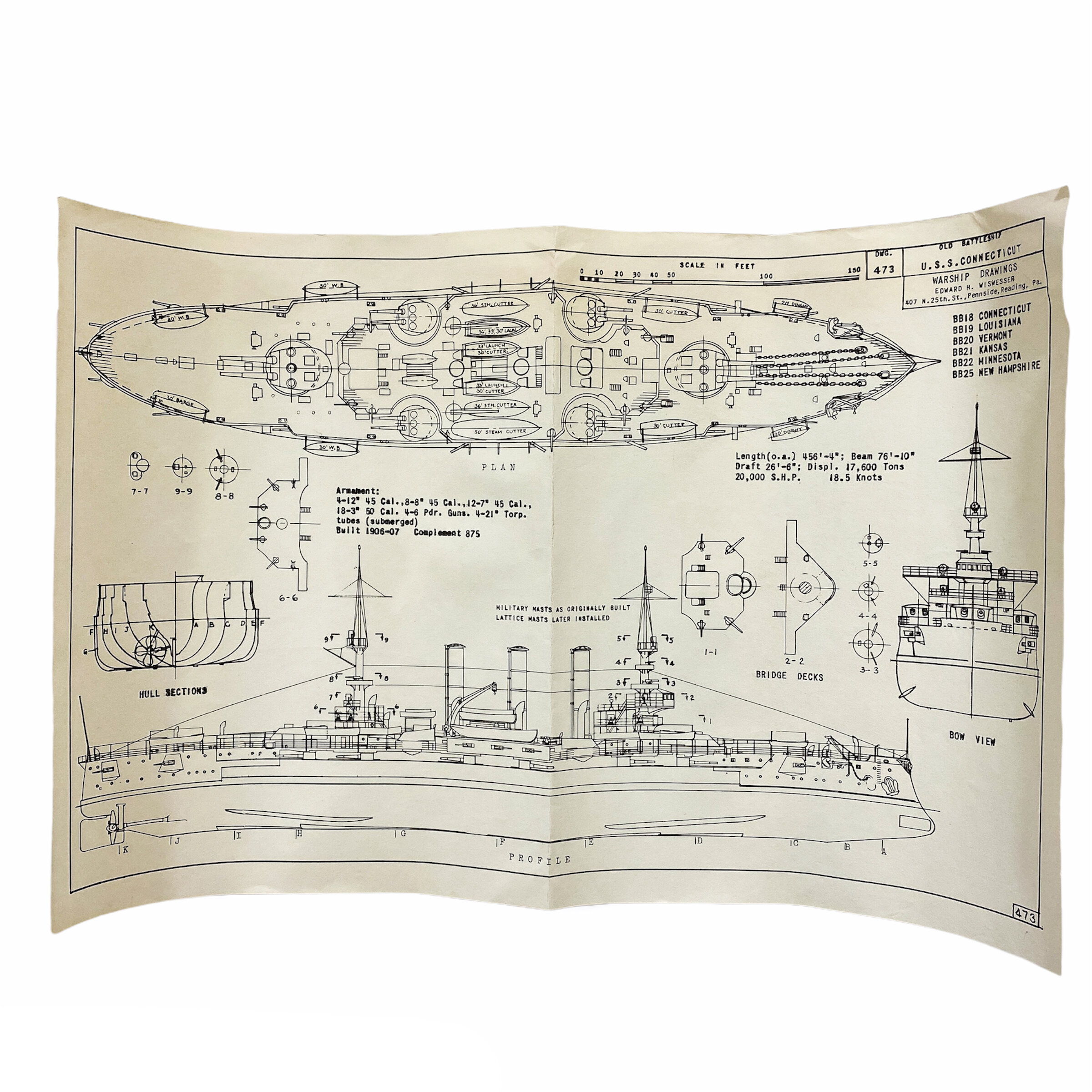



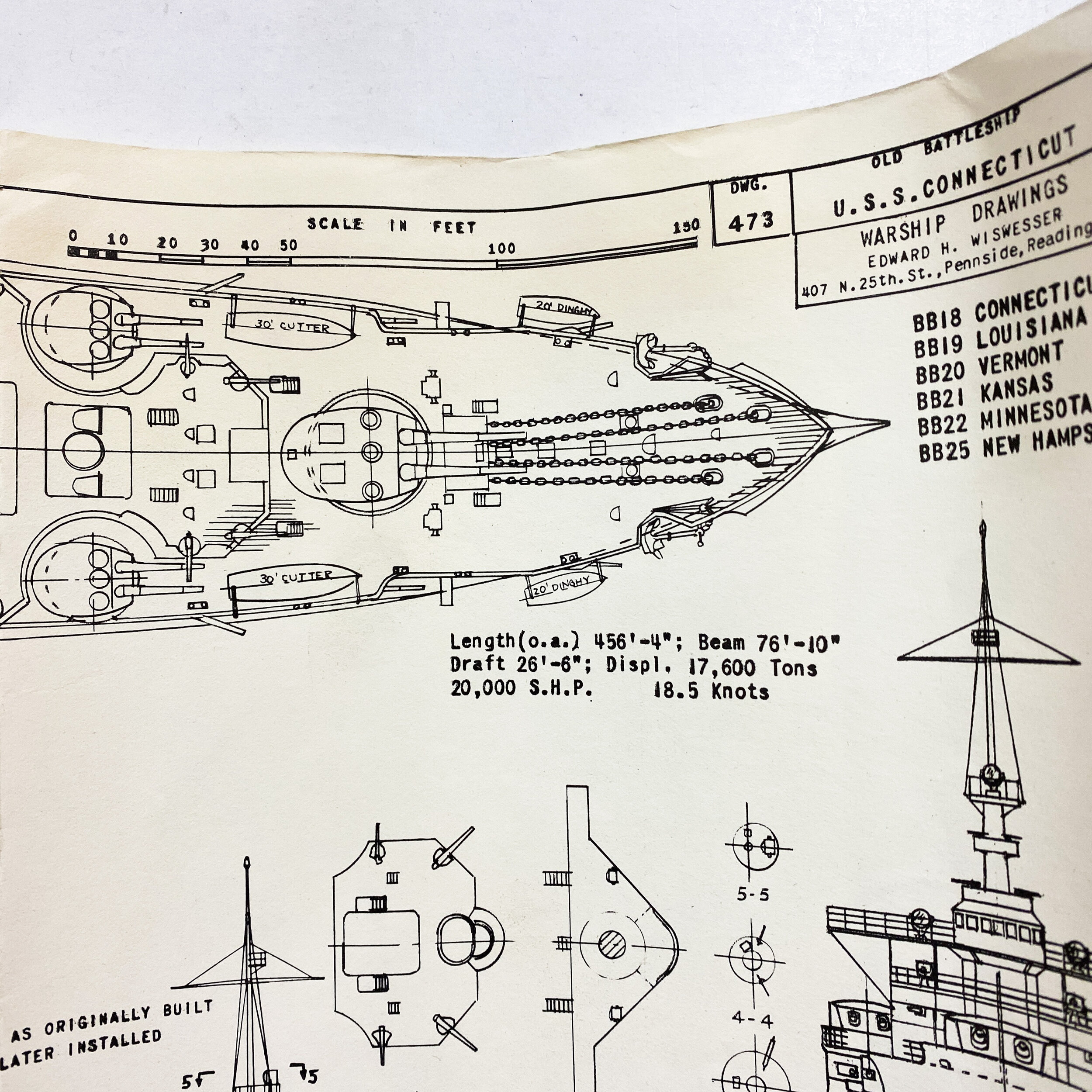

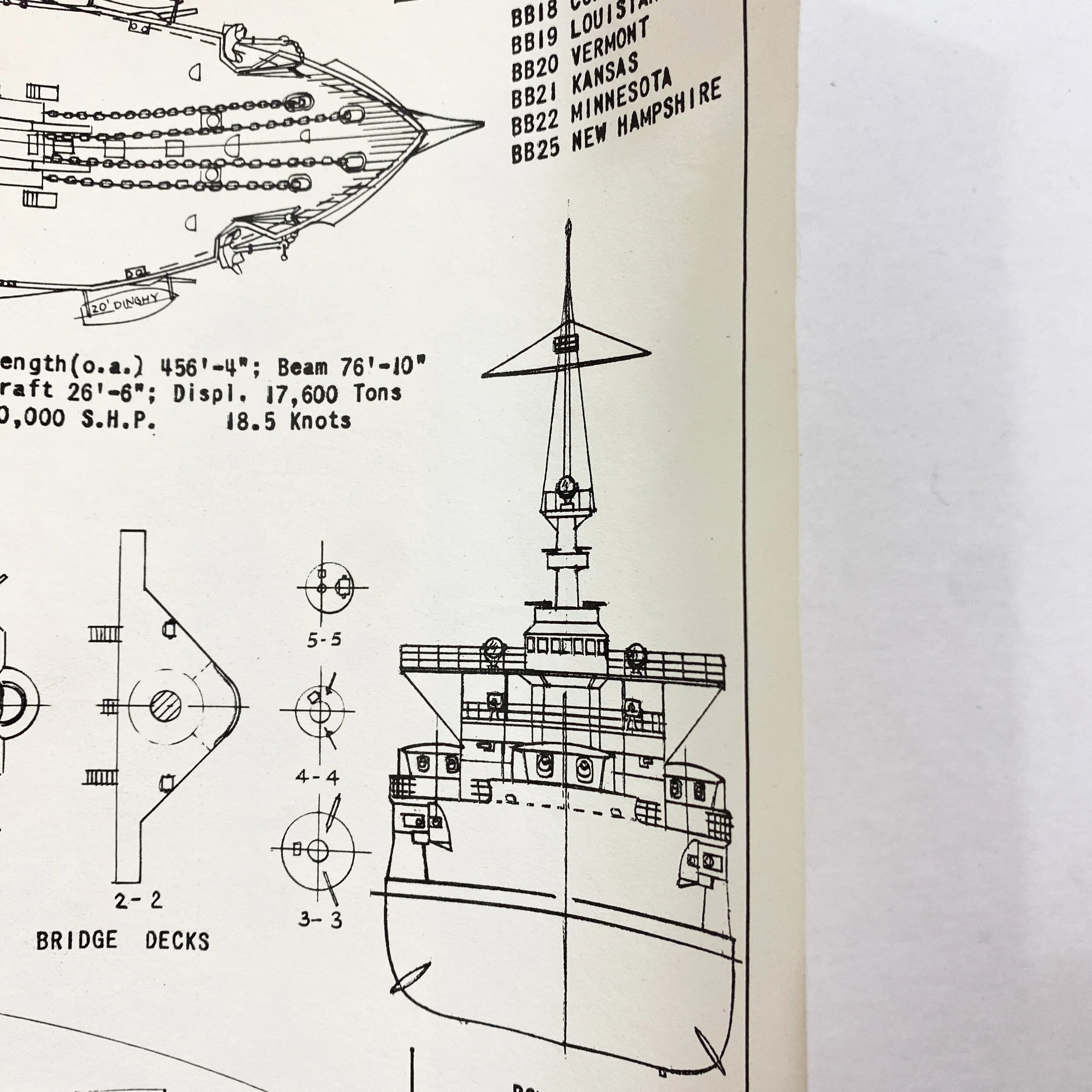



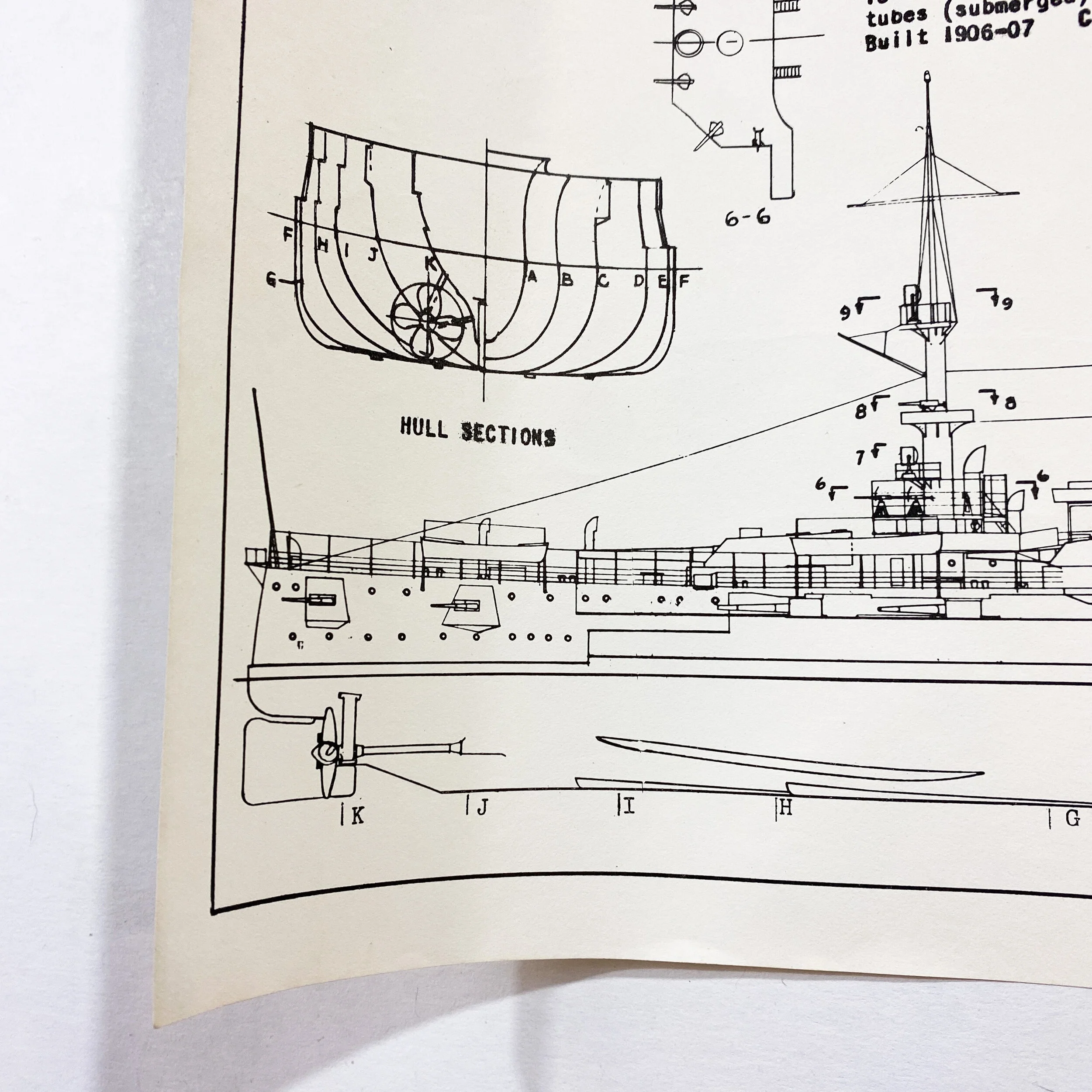
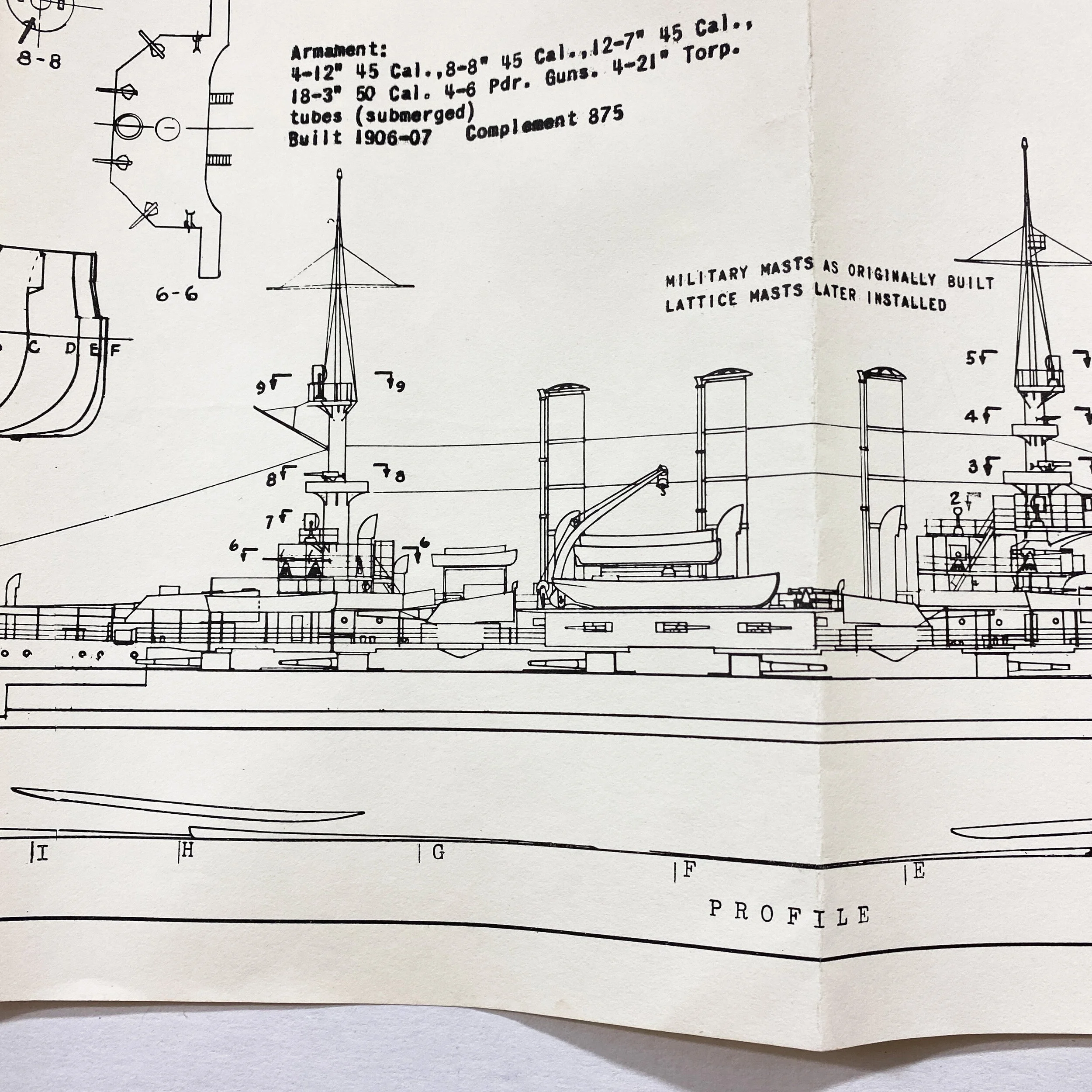

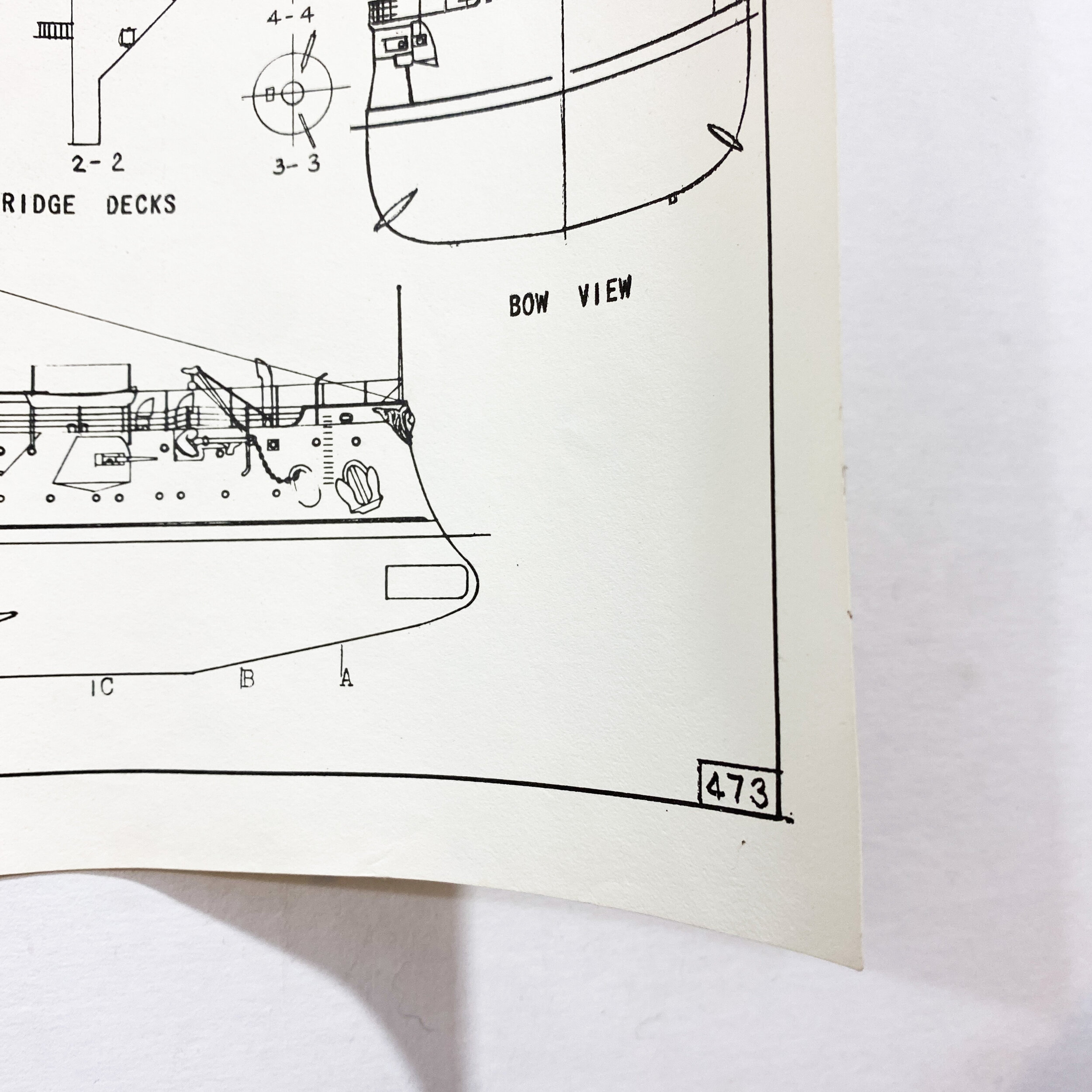





Connecticut Class Battleship U.S.S. Connecticut Layout Blueprint - Drawing 473 - Edward H. Wiswesser
From the personal blueprint collection of Edward H. Wiswesser.
Size: 11 x 17 inches
This blueprint comes from the blueprint collection of the famous Edward H. Wiswesser. From 1940-1946, Edward H. Wiswesser worked at the Philadelphia Naval Yard designing warships for the United States Navy, specializing in Iowa-class battleships including his direct hand in designing the Battleships USS New Jersey and the USS Wisconsin. His design of the USS New Jersey was one of the Iowa-class "fast battleship" designs planned in 1938 by the Preliminary Design Branch at the Bureau of Construction and Repair. She was launched on December 7th of 1942 (the first anniversary of the attack on Pearl Harbor) and was commissioned on 23 May 1943. The ship was the second of the Iowa class to be commissioned by the U.S. Navy. The USS New Jersey (BB-62) ("Big J" or "Black Dragon") was the second ship of the United States Navy to be named after the US state of New Jersey. New Jersey earned more battle stars for combat actions than the other three completed Iowa-class battleships, and was the only US battleship providing gunfire support during the Vietnam War. During World War II, New Jersey shelled targets on Guam and Okinawa, and screened aircraft carriers conducting raids in the Marshall Islands. Edward H. Wiswesser other design of the USS Wisconsin (BB-64) is an Iowa-class battleship, the second ship of the United States Navy to be named in honor of the U.S. state of Wisconsin. She was built at the Philadelphia Naval Shipyard in Philadelphia, Pennsylvania and launched on December 7, 1943 (the second anniversary of the Pearl Harbor raid), sponsored by the wife of Governor Walter Goodland of Wisconsin. During her career, Wisconsin served in the Pacific Theater of World War II, where she shelled Japanese fortifications and screened United States aircraft carriers as they conducted air raids against enemy positions.
This specific blueprint is labeled as drawing number 473 and is titled “Old Battleship U.S.S. Connecticut’. The blueprint itself is also title ‘Warship Drawings’ and contains the name of Edward H. Wiswesser himself. The blueprints for this specific battleship are in conjunction with BB 18 Connecticut, BB 19 Louisiana, BB 20 Vermont, and 5 other BB ships. The blueprint contains some of the most detailed and intricate constructional layouts of the ship as well as detailed measurements of its length, knot speed, arraignment, hull dimensions, guns and turret attachments. The blueprint itself is in relatively good condition for its age with minor creasing and tears. While this blueprint is not of a WWII era ship, it was most likely used as a study blueprint of past Naval ships as Edward H. Wiswesser designed WWII era ships for the Navy.
Connecticut Class:
The Connecticut class of pre-dreadnought battleships were the penultimate class of the type built for the United States Navy. The class comprised six ships: Connecticut, Louisiana, Vermont, Kansas, Minnesota, and New Hampshire, which were built between 1903 and 1908. The ships were armed with a mixed offensive battery of 12-inch (305 mm), 8-inch (203 mm), and 7-inch (178 mm) guns. This arrangement was rendered obsolete by the advent of all-big-gun battleships like the British HMS Dreadnought, which was completed before most of the Connecticuts entered service.
Nevertheless, the ships had active careers. The first five ships took part in the cruise of the Great White Fleet in 1907–1909—New Hampshire had not entered service. From 1909 onward, they served as the workhorses of the US Atlantic Fleet, conducting training exercises and showing the flag in Europe and Central America. As unrest broke out in several Central American countries in the 1910s, the ships became involved in police actions in the region. The most significant was the American intervention in the Mexican Revolution during the occupation of Veracruz in April 1914.
During the American participation in World War I, the Connecticut-class ships were used to train sailors for an expanding wartime fleet. In late 1918, they began to escort convoys to Europe, and in September that year, Minnesota was badly damaged by a mine laid by the German U-boat SM U-117. After the war, they were used to bring American soldiers back from France and later as training ships. The 1922 Washington Naval Treaty, which mandated major reductions in naval weapons, cut the ships' careers short. Within two years, all six ships had been sold for scrap.
USS Connecticut :
USS Connecticut (BB-18), the fourth United States Navy ship to be named after the state of Connecticut, was the lead ship of her class of six battleships. Her keel was laid on 10 March 1903; launched on 29 September 1904, Connecticut was commissioned on 29 September 1906, as the most advanced ship in the US Navy.
Connecticut served as the flagship for the Jamestown Exposition in mid-1907, which commemorated the 300th anniversary of the founding of the Jamestown colony. She later sailed with the Great White Fleet on a circumnavigation of the Earth to showcase the US Navy's growing fleet of blue-water-capable ships. After completing her service with the Great White Fleet, Connecticut participated in several flag-waving exercises intended to protect American citizens abroad until she was pressed into service as a troop transport at the end of World War I to expedite the return of American Expeditionary Forces from France.
For the remainder of her career, Connecticut sailed to various places in both the Atlantic and Pacific while training newer recruits to the Navy. However, the provisions of the 1922 Washington Naval Treaty stipulated that many of the older battleships, Connecticut among them, would have to be disposed of, so she was decommissioned on 1 March 1923, and sold for scrap on 1 November 1923.